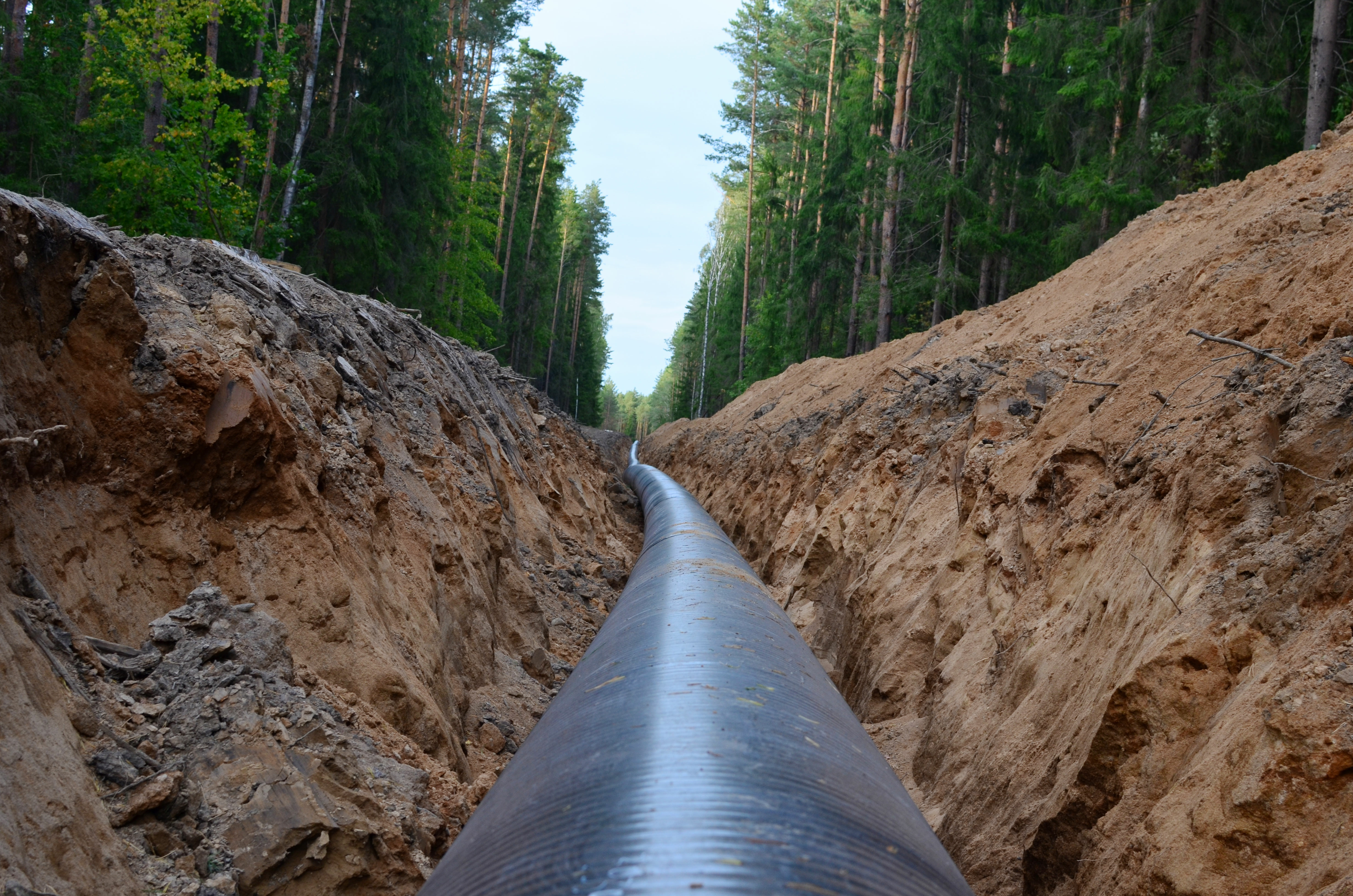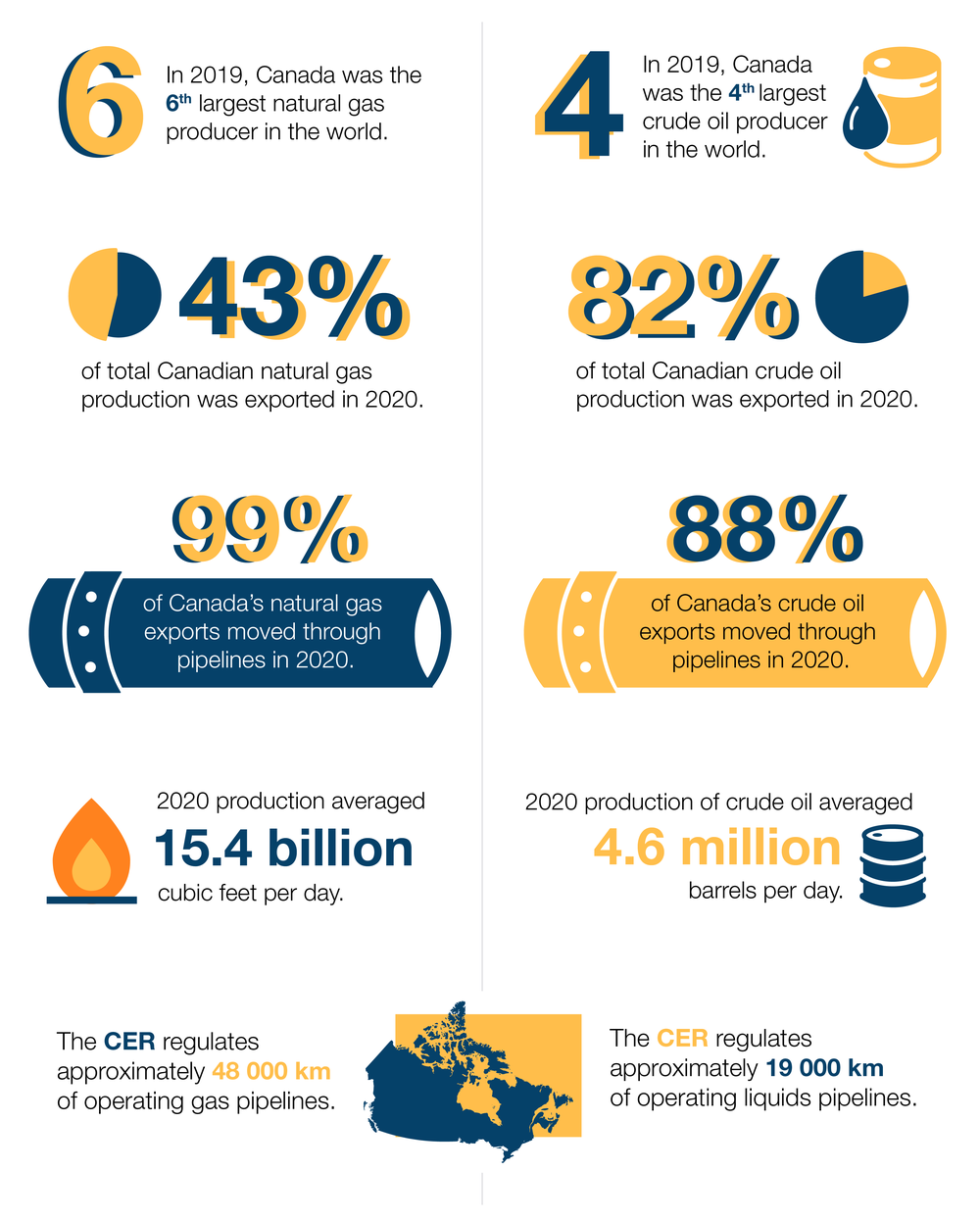Introduction
Canadians depend on pipelines to deliver crude oil, natural gas, natural gas liquids (NGLs), and refined petroleum products (RPPs) across Canada. These pipelines deliver energy safely, reliably, and efficiently to Canadian end-users, connect North American markets, and transport energy to ports for sale. If a pipeline system crosses provincial or international boundaries, it is regulated by the Canada Energy Regulator (CER)Footnote 1. The CER regulates over 73 000 kilometres (km) of pipeline.
Canada’s Pipeline System 2021: Economics of CER-Regulated Infrastructure (Canada’s Pipeline System 2021), uses data from publicly available sources, including CER regulatory documents, to provide commodity market and economic regulation information related to major interprovincial and international pipelines regulated by the CER for the period 2015 to 2020.
Canada’s Pipeline System 2021 contains an overview of major pipeline transportation systems for three energy commodities:

These sections provide an overview of recent commodity market trends, pipeline capacity and utilization levels, and pipeline apportionment. Recently completed and proposed projects are summarized, with links to CER regulatory documents. An overview of non-pipeline energy transportation modes, including crude-by-rail, are also included for completeness.
Canada’s Pipeline System 2021 next contains data and analysis related to the CER’s economic regulation of pipelines. This section contains an overview of pipeline transportation tolls and tariffs, summary of recent negotiated settlements and toll proceedings, information on financial resource requirements, and pipeline abandonment funding.
This report also provides an overview of the financial integrity of oil and gas pipelines. It includes information about common equity, pipeline financial metrics (such as revenues and rate base), credit ratings, and overall investment trends in Canada’s pipeline transportation sector.
Canada’s Pipeline System 2021 Appendix includes:
- Credit Rating Scale Comparison Chart and Recent Ratings Changes
- Absolute Liability Limits and Readily Accessible Resource Levels for Oil and Gas Pipeline Companies
- Abandonment Cost Estimates and Amounts Set Aside for Major Oil and Gas Pipeline Companies
Data used in Canada’s Pipeline System 2021
The underlying data in this product comes from REGDOCS, the database for regulatory activities and transactions conducted at the CER. This data source includes information about pipeline project applications and financial compliance filings. Pipeline throughput and capacity data is filed with the CER on a quarterly basis, consistent with requirements set out in the CER’s Filing Manual Guide BB Pipeline Traffic Data reporting. This information is aggregated by the CER, and added to Canada’s Open Government as the Pipeline Throughput and Capacity data set. Crude oil, natural gas, and natural gas liquids production data comes from Canada’s Energy Future 2020. Crude-by-rail export data is collected by the CER and published monthly. Import and export data is collected by the CER and published in the Commodities Tracking System. Data on credit ratings comes from credit rating agencies, including DBRS Morningstar, S&P, and Moody's. Where appropriate, citations to regulatory documents or other technical material has been added. Other sources for information include Statistics Canada and the United States (U.S.) Energy Information Administration.
Although the report is primarily focused on the period 2015 to 2020, recently received pipeline throughput data for Q1 2021 is also included.
More information about CER’s regulated pipelines, including maps, environmental information and pipeline safety is available in the Pipeline Profiles and on the Facilities we regulate page.
Curious about previous versions of the CER’s pipeline transportation systems report? They are available:
- Canada’s Pipeline Transportation System 2016 - Energy Market Assessment - August 2016
- Canadian Pipeline Transportation System - Energy Market Assessment - April 2014
- Canadian Pipeline Transportation System - Transportation Assessment - July 2009
- Canadian Pipeline Transportation System - Transportation Assessment - June 2008
Oil and gas markets at a glance
Figure 2. Highlights of the Canadian Crude Oil and Natural Gas Markets

Source and Description
Source: CER
Description: This infographic contains highlights about oil and gas markets:
- In 2019, Canada was the 6th largest natural gas producer in the world.
- 43% of total Canadian natural gas production was exported in 2020.
- 99% of Canada’s natural gas exports moved through pipelines in 2020.
- 2020 production averaged 15.4 billion cubic feet per day.
- The CER regulates approximately 48 000 km of operating gas pipelines.
- In 2019, Canada was the 4th largest crude oil producer in the world.
- 82% of total Canadian crude oil production was exported in 2020.
- 88% of Canada’s crude oil exports moved through pipelines in 2020.
- 2020 production of crude oil averaged 4.6 million barrels per day.
- The CER regulates approximately 19 000 km of operating liquids pipelines.
- Date modified:
